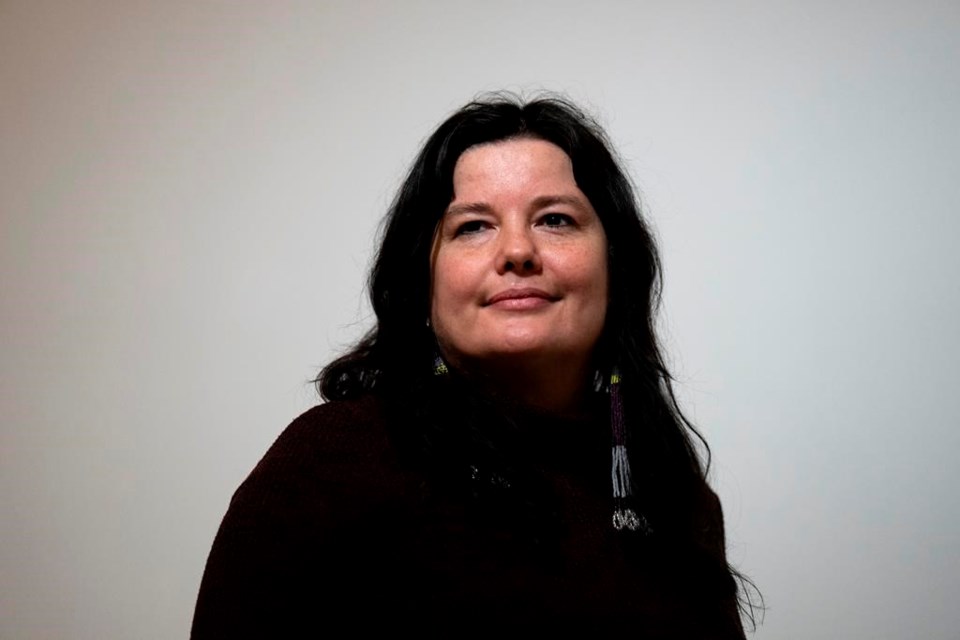TORONTO — The Art Gallery of Ontario says it will review some of its governance policies and work on "rebuilding of trust" as it faces intense criticism over the departure of its celebrated Indigenous curator Wanda Nanibush earlier this month.
The AGO's response comes after dozens of people from Indigenous arts communities in Canada and other countries signed a letter this week calling on the gallery to publicly acknowledge and explain Nanibush’s quiet exit from a role she's held for years.Â
Citing unnamed sources with connections to the AGO, The Globe and Mail has reported that Nanibush’s “vocal opinions” on various subjects – including her support of Palestinian causes – had caused friction among AGO staff, supporters of the institution and those who complained about Nanibush's stance.Â
An open letter from AGO director and CEO Stephan Jost, posted Thursday on the gallery's website, makes no mention of Nanibush or her departure but acknowledges "intense discussion in the cultural community about freedom of political thought, artistic expression and the importance of good governance."
Jost said the AGO is aware of "several letters and social media posts in circulation speculating about internal conversations" at the gallery.
"I hear you. I am taking this seriously and I know there will need to be a rebuilding of trust," Jost wrote in the statement, a copy of which was emailed to The Canadian Press in response to a request for comment on the controversy.
"The events of the last several weeks have shaken us individually and institutionally," Jost wrote. "We are taking the time to deeply review and reflect on our commitments to the Truth and Reconciliation Commission Report so we can continue our efforts."
He said the process "to better define the rights and limits of political and artistic expression" has started internally, "and, in addition, we will review some of our governance policies through a thoughtful and inclusive process."
Earlier this week, Indigenous artists, curators, educators and advocates called for a "genuine response" from the AGO on the matter and a public acknowledgment of Nanibush's contributions to the international art world and decolonization efforts.Â
Their letter said that while Nanibush’s appointment as the AGO’s first curator of Indigenous Art and co-lead of the gallery's Indigenous and Canadian Art Department was highly publicized in 2017, her departure was “notably" silent.
"Many of us haphazardly learned of (it) only through a social media post,” the letter said.
Nanibush, an accomplished Anishinaabe-kwe curator, writer and community organizer from Beausoleil First Nation in southern Ontario, has not publicly commented on her departure from the AGO.Â
She worked with various arts and community organizations before joining the AGO and won this year's Toronto Book Award for "Moving the Museum," a book she co-authored with AGO colleague Georgiana Uhlyarik.
The letter addressed to the AGO and arts institutions worldwide said that Nanibush’s case is just one example of Indigenous arts workers who have been “pushed out of institutions” in recent years.
It noted that Lucy Bell, a member of the Haida Nation who led the Indigenous collection and repatriation department at the Royal BC Museum, left the institution before a formal investigation concluded there was workplace racism and bullying at the museum; and that Kanyen’keháka artist and curator Greg A. Hill was dismissed from the National Gallery of Canada “with little transparency” on the reason.Â
“The harms inflicted upon our community members working in these institutions MUST CEASE,” the letter said. “We are concerned about the safety and security of colonized people working in public institutions worldwide.”
Hill is one of the signatories of the letter, but he did not respond to an interview request. In a social media post last year, he said he was “fired” from the National Gallery of Canada because he disagreed with the way the gallery’s Department of Indigenous Ways and Decolonization was being run.
The AGO's chief executive said in his letter that the gallery "remains fundamentally and fully committed to showing, acquiring and programming Indigenous art, voices, and stories."Â
Jost also said the AGO will consult its "stakeholders" and the gallery's process to review its approach and policies will "continue over the next number of months."
Aylan Couchie, a Nishnaabekwe interdisciplinary artist, writer and curator from Nipissing First Nation who organized the letter signed by members of the international Indigenous arts community, said she wants to know who exactly those stakeholders are.Â
In a text message to The Canadian Press, Couchie said Jost's statement "doesn’t provide a framework for how they are addressing this situation within that timeline."
"It feels to me like they are hoping this just blows over but what is the strategy for followup and accountability?" she wrote.Â
"Are we supposed to just trust that they will be forthcoming with more information in the upcoming months? Who will be overseeing this process because it can’t be them, from the inside."
This report by The Canadian Press was first published on Nov. 30, 2023.Â
Sonja Puzic, The Canadian Press




